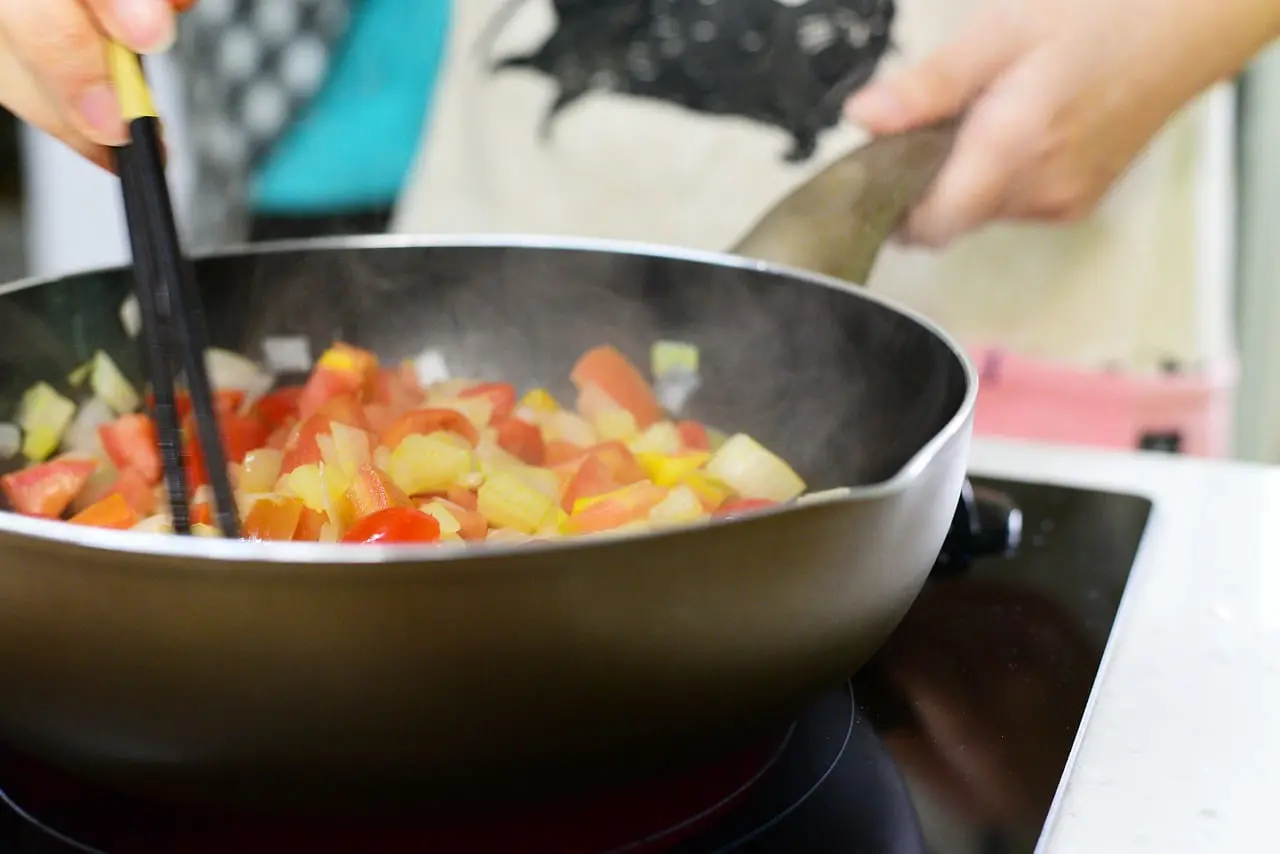The culinary techniques of saute and sear may seem similar at first glance, as both involve using high heat and a small amount of fat or oil. However, these methods produce distinct results that can greatly impact the flavor and texture of your dishes. In this blog post, we'll explore the differences between saute and sear, and how to use each technique to elevate your cooking game.
Basic Saute
Sautéing is a culinary technique that involves cooking chopped foods quickly in a hot pan with oil (or fats) and keeping them moving constantly. The word “sauté” means “jump” in French, and indeed, making the food flip in the pan is a key part of the technique, so that it’s not sitting for too long in one spot. Whether you're a novice cook or a seasoned chef, learning to cook with a basic saute will help in many different applications.
Method
Add just enough oil to the bottom of a sauté pan and place it over high heat. Using a fat or oil that can withstand high heat, such as clarified butter or canola oil, allows even heating and prevents sticking, while browning the food quickly seals in the juices.
When the oil is hot, place the food in the pan on its most attractive side. Do not overcrowd the pan, or the temperature will drop and the food won't brown properly.
Once the first side has browned, flip the food over and brown the other side. Do not turn it more than once or twice as this will hinder flavor development.
Saute is Used for:
Saute works best with fish and thin cuts of tender meat. Thicker pieces would burn before the inside is cooked, so it is necessary to decrease the heat after browning. The cooking time will depend on the size and thickness of the food.
Some examples of foods that are commonly sautéed include:
1. Fish fillets (such as salmon or tilapia)
2. Chicken breast
3. Thinly sliced beef or pork
4. Shrimp or other shellfish
5. Vegetables, such as bell peppers, onions, mushrooms, and zucchini
6. Tofu
7. Sausages
8. Scallops
9. Lamb chops
10. Eggplant slices
11. Sliced mushrooms
12. Asparagus spears
Saute is a popular method for cooking because it is quick and easy, and allows for a variety of flavors and ingredients to be combined in one dish. It can also be used as a base for many different types of sauces or marinades. Sauteed foods can be served on their own as a main dish, or added to pastas, salads, or rice dishes.
Searing
Searing is a method of cooking food at high temperatures, typically using a direct heat source such as a grill or a hot pan. This technique involves browning the surface of food at high temperatures to develop rich flavors and impart a beautiful caramelization.
Method:
To sear food, first preheat your cooking surface (such as a grill or pan) to a high temperature.
Pat dry the meat or other ingredients you want to sear, then place your food on the hot surface and let it cook for a few minutes without moving it. This allows the surface of the food to caramelize and develop a flavorful crust.
After a few minutes, use tongs to flip the food over and sear the other side. Once you sear both sides, you can continue cooking the food using another method (such as roasting, saute, or braising) or serve it immediately.
A good sear not only adds flavor and texture to food but also helps slow the loss of juices, making it an important step in many recipes.
Sear is Used For:
It is especially useful for cooking meats like steaks or pork chops, but can also be used for vegetables like asparagus or zucchini.
Tuna: Sear tuna steaks in a hot skillet for about 1 minute on each side, or until desired doneness. Remove from heat and let cool for a few minutes. Using a fork, shred the tuna into small pieces. Serve as desired.
Mushrooms: First choose the Right Mushrooms. Opt for varieties that can stand up to a sear, like cremini, shiitake, or portobello. Select firm mushrooms without signs of sliminess or discoloration.
Prep the Mushrooms: Gently wipe them with a damp paper towel to remove dirt (avoid washing to prevent waterlogging). Trim the stems and slice to your desired thickness.
Heat the Pan:
Use a hot skillet or frying pan over medium-high heat. Add a small amount of olive oil or butter.
Sear the Mushrooms: Add the prepared mushrooms to the hot pan (avoid overcrowding). Let them cook undisturbed for a few minutes to develop a golden-brown crust. Gently stir occasionally until beautifully caramelized and tender.
Onions: Heat a skillet over medium-high heat and add a small amount of oil or butter. Once the pan is hot, add sliced onions and let them cook for a few minutes until they start to caramelize (sear).
Continue cooking, stirring occasionally, until the onions are soft and golden brown. This should take about 10-15 minutes. Season with salt and pepper to taste.
Meats: To sear meats, first pat them dry with paper towels to remove any excess moisture. Preheat a skillet or grill to high heat.
Place the meat onto the hot surface and let it cook without moving or flipping for a couple of minutes. This will allow a crust to form on the bottom.
Flip the meat over with tongs and let it cook for an additional couple of minutes on the other side until desired doneness is reached. Use a meat thermometer to ensure proper cooking temperatures.
Always remember to let your meat rest for a few minutes before cutting into it, as this allows the juices to redistribute and keeps the meat tender.
Source: hannaone, Culinary Cafe

